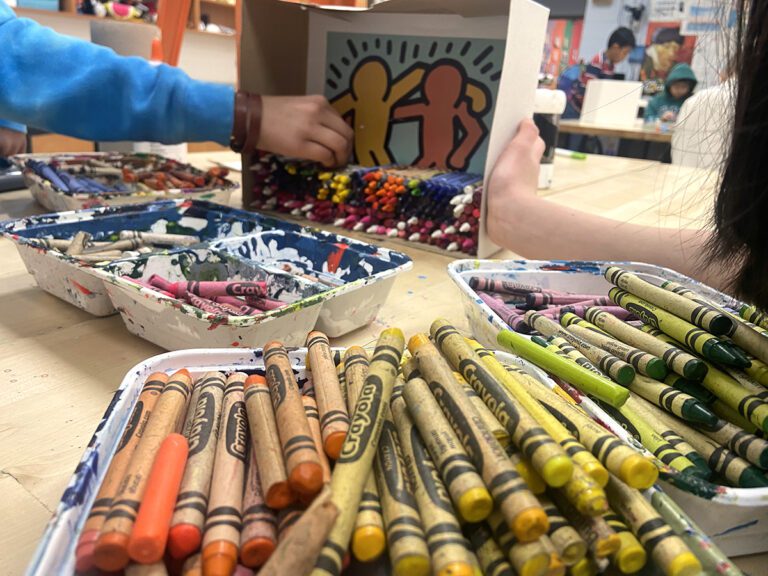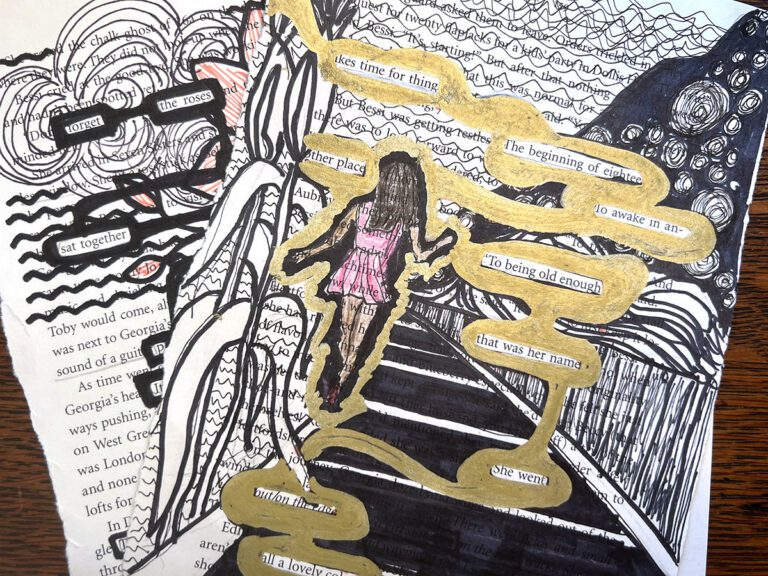Poetry in itself is an art form. The words are often full of imagery and expression. Poetry lends itself to a lot of art projects, so it’s a perfect opportunity for a little cross-curricular collaboration! Consider teaming up with your school English/literature teacher to develop some awesome cross-curricular connections. In the meantime, you can easily connect the art of poetry to that of artmaking.
Here are 5 lessons to connect art and poetry:
1. Poem Illustrations
One of the easiest ways to connect art and poetry in your classroom is to simply ask students to illustrate different poems. You can discuss the term, imagery, and how the words can help students imagine a mental picture. Read aloud a poem to your class, and ask students to identify words that make them think of pictures or symbols. Write their list on the board.
At first, students will have very literal interpretations of the text. If they hear the word “tree,” they may simply draw a tree. Encourage them to look beyond the literal translations and think more abstractly as well. A word like “freedom” can be depicted visually in a variety of ways. Push your students to think outside the box.
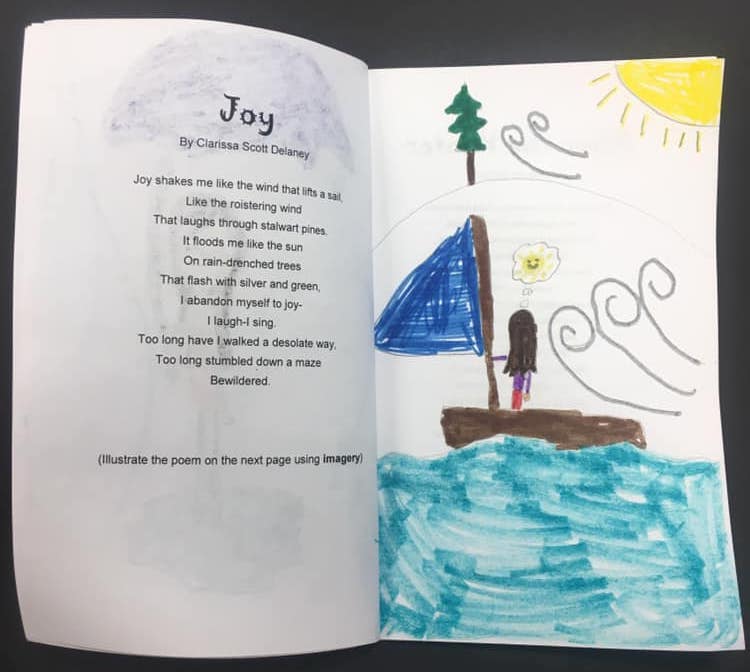
Give students a few poems to choose from, but limit the number of choices to four or five. This way, you can display some of the finished illustrations and have a class discussion about different interpretations. Two students may have the same poem but have very different illustrations based on which words they selected to convey visually. This is an opportunity to point out how poems can be interpreted differently by different readers, just like art!
2. Inspiring Poem Bookmarks
Have students do a little bit of research and find poems on their own. You can guide their search with a few notable poets. Ask them to select a poem with great imagery. Give students a strip of tagboard to design a bookmark.
On the front of the bookmark, students should write the words of the poem in a creative way. They can write it in different font lettering, colors, and styles. Be sure to encourage students to make the poem legible.
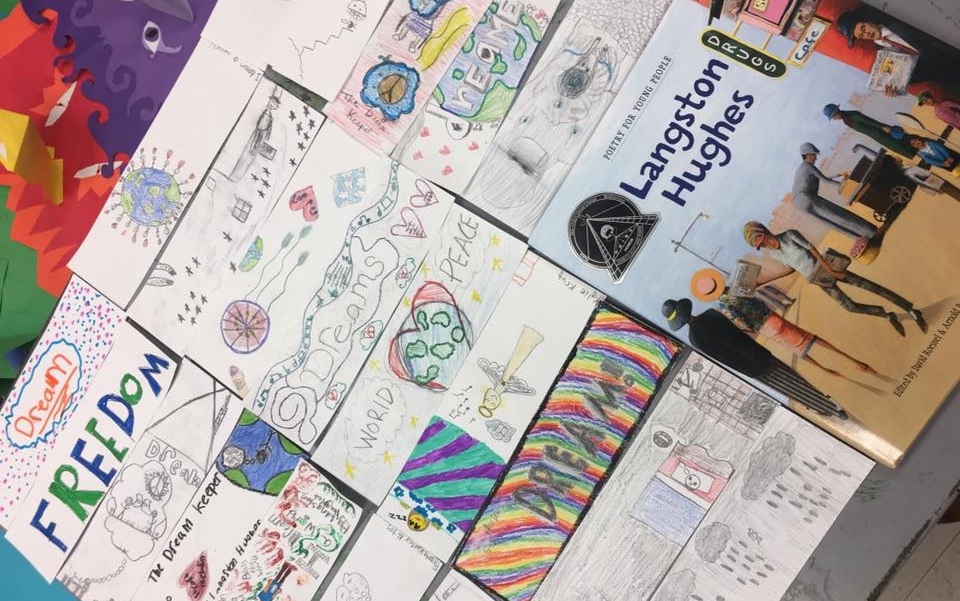
Once the words of the poem are written, students will create a corresponding illustration on the back. Have them reread the poem and circle any descriptive language that gives them an idea for a drawing. Once they’ve analyzed the poem a second time, they should have a few ideas of what to draw for their illustration.
The bookmarks can be copied, laminated, and distributed to the class, or made available in the library. Be sure to share them with other staff and the community, as everyone will want to get their hands on these inspiring poem bookmarks!
3. Couplet Collaborative
Now that students have a handle on what imagery is and how to best illustrate a poem, it may be time to introduce a collaborative activity. After reading and illustrating the work of other poets, now it’s time for the students to pick up the pen and write their own.
This can be intimidating at first, so start small. Explain to your students what a couplet is. If you have a good working relationship with your school English teacher, he or she may be able to help you out with this. Assign a student to create the start of a poem. He or she will need to create a rhyming couplet. Once they have their couplet written, they will assign another student to the next two lines. This will go on until each student has contributed.
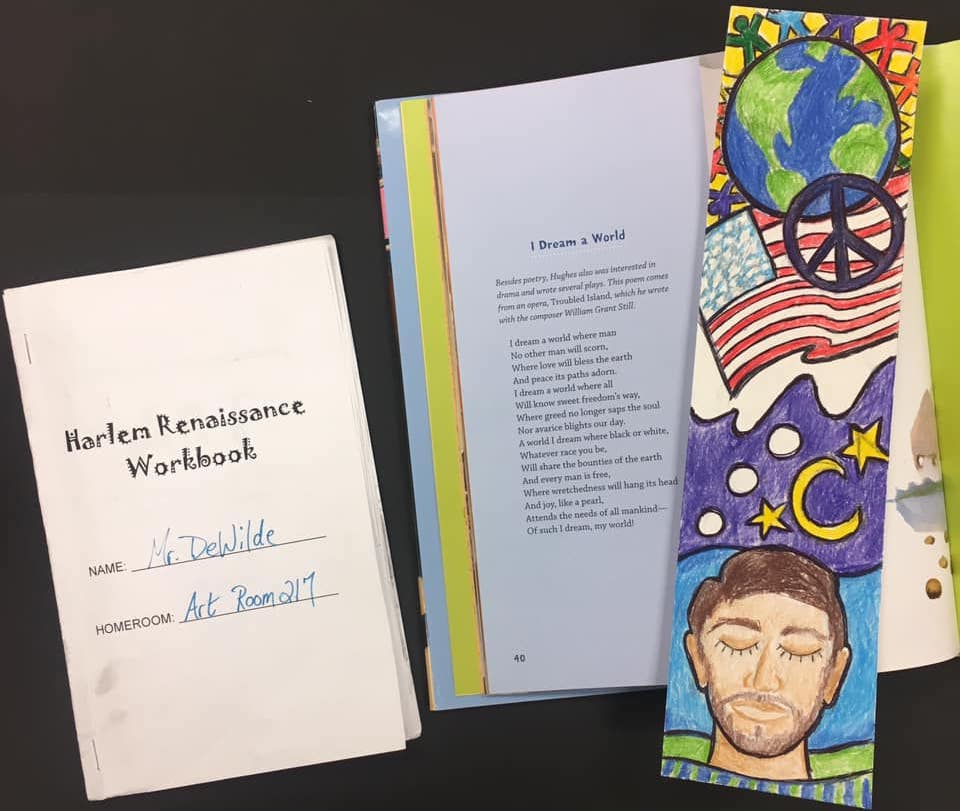
Be sure to explain to students their two lines of poetry should relate to the general story or theme their classmates have created. Once the entire class has contributed a couplet, type each pair of lines on separate sheets of paper. Ask students to illustrate their two lines from the poem.
The finished pages of poetry and illustrations can be bound together as a class book, and each student can take home a copy to share with family and friends.
4. Silverstein Sillies
Shel Silverstein is a legendary poet and illustrator who has written several books of poetry kids love. The poems are generally short, silly, and many have fun illustrations alongside the pages.
Your students may already know some of Silverstein’s work, but if they don’t, you won’t have too much trouble getting them to read his poems. With topics like selling your annoying sibling, and picking your nose, Silverstein has plenty of great poems that children will enjoy.
These silly bits of content can lead to some amusing drawings. Although Silverstein did illustrate many of his poems, there were some that were left blank. This is an excellent opportunity for your students to use the poet’s words to create some original art.
Ask students to select one of Silverstein’s poems that does not currently have an illustration. Using the imagery and the story of the selected book, have your student create a drawing in pen and ink, similar to Silverstein’s illustrations.
These would make a great display in your school library and encourage other students to check out Silverstein’s (and other poet’s) books!
5. Imagery Partners
If you’re really feeling ambitious, you can have students write their own poetry in your classroom. This may be something you can work out with your school English teacher as well. They could possibly have students write the poems in their classroom before coming to yours. Remind students about descriptive language and imagery, and ask them to write a poem to share with a partner. The more visually descriptive the poem can be, the easier the next step will be for their partner.
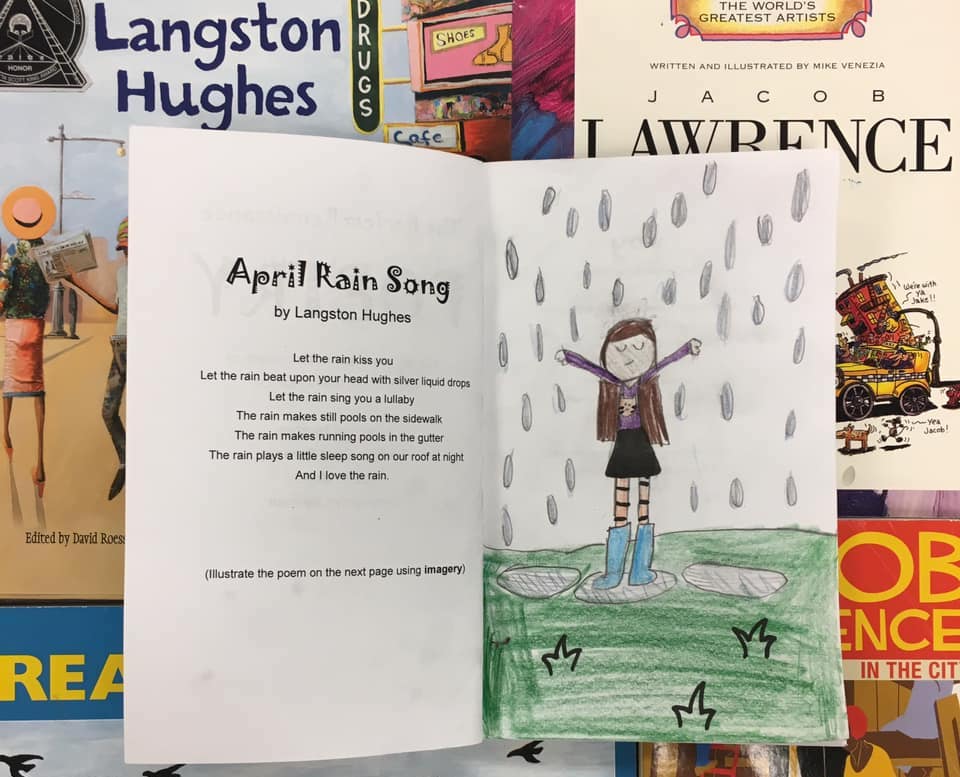
Once all students have completed their poems, they will trade with their partners. Each student will illustrate the poem their partner wrote. Students can use any variety of art media, choosing what’s best for the poem and visual ideas they have in mind. They may only use the words of the poem for inspiration. They cannot ask the writer for any input whatsoever. If they did their job as a poet, the words painted a clear picture for the artist to interpret.
With the students’ permission, hang the artwork and written poems side-by-side in your school.
Final Thoughts
Art and poetry can go hand and hand. They both allow students an outlet for creative expression. All students need to have this opportunity to share their feelings. While some may be able to communicate their emotions well verbally, others need to express themselves differently.
Learn more
Making Connections: Art and Poetry
Poetry can be intimidating to many, just as art can be to some of your students. Ease them into the process and allow them to make connections to art and vice-versa. When we make these cross-curricular connections, the level of understanding is so much deeper than that of learning one set of skills and content alone.
What poetry projects have you attempted in the art room?
Do you have a favorite poem to share with students?
What ways have you collaborated with English/literature teachers in your school?
Magazine articles and podcasts are opinions of professional education contributors and do not necessarily represent the position of the Art of Education University (AOEU) or its academic offerings. Contributors use terms in the way they are most often talked about in the scope of their educational experiences.


